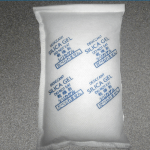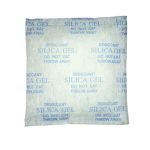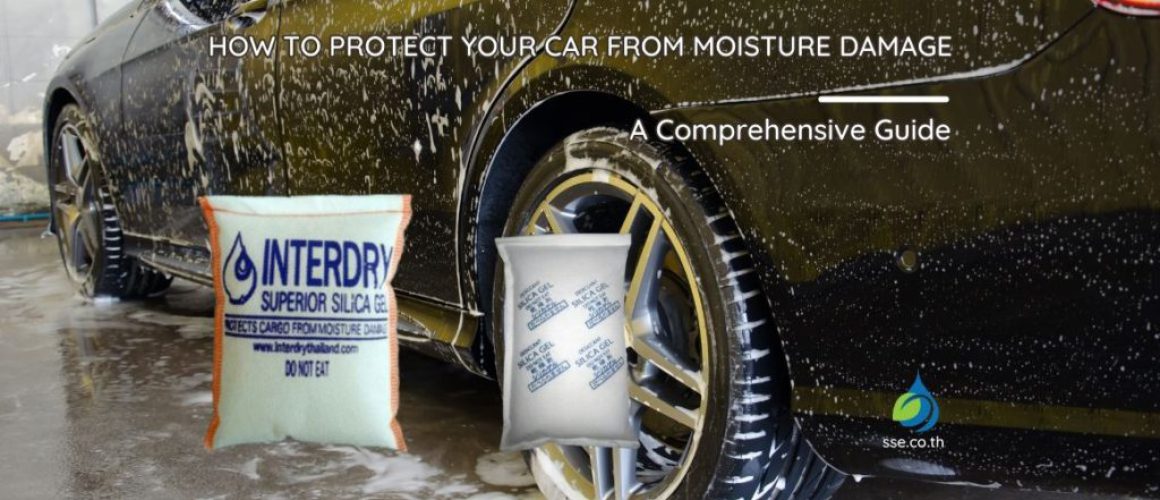How to Protect Your Car from Moisture Damage
Table of Contents
Protect Your Car From Moisture
When you think of car care, you probably think of regular oil changes, brake checks, and tire rotations. But one aspect of car maintenance often gets overlooked: protecting your car from moisture damage. Let’s dive into the importance of safeguarding your vehicle from excessive moisture and how to do it effectively.
Understanding the Impact of Moisture on Your Car
Just like your home, your car is also affected by weather conditions, and it’s crucial to understand how. So what does water damage do to a car? Let’s find out.
Impact of Rain and Moisture on Cars
Rain and moisture can have a myriad of impacts on your vehicle. From rusting the body to corroding the car’s internal parts, moisture is a silent enemy. Plus, there’s always the risk of water entering your engine or interior, causing significant damage.
Symptoms of Water Damage in Cars
Spotting the symptoms of water damage can help you act promptly. Look for signs such as damp carpets, a musty smell, fogged-up windows, and in severe cases, malfunctioning electrical systems.
What Happens if Water Enters the Engine?
Water entering the engine can cause a condition known as hydrolock, where water fills the engine cylinders, preventing the pistons from moving. This can lead to severe engine damage.
Regular Cleaning and Maintenance
Car maintenance isn’t just about what’s under the hood. It also involves taking care of the exterior, and that means regular cleaning. But how often should you wash your car, and what weather is best to wash your car? Let’s discuss.
Washing Your Car After Rain
Washing your car after it rains helps remove any potential contaminants that the rain might have carried onto your vehicle’s surface. It also prevents water spots from forming and damaging the car’s paintwork.
Importance of Drying Your Car Properly
After washing, it’s essential to dry your car properly. Leaving it to air dry can result in water spots and potential paint damage. Using a microfiber towel or a car dryer can help you achieve a spotless finish.
Best Time and Weather for Car Washing
The best time to wash your car is on a cool, cloudy day. Washing your car under the hot sun can lead to water spots and soap stains, as they dry up before you have a chance to rinse them off.

.
Parking Considerations
Where you park your car can have a significant impact on its longevity. So, is it bad to leave your car in the rain? Let’s find out and discuss some strategies for protecting your car from moisture.
Protect your Car from Moisture and Rain
Parking your car under a covered area or using a car cover can protect it from direct rain, reducing the risk of water seeping into places it shouldn’t. If you live in a particularly rainy area, investing in a waterproof car cover could be a wise choice.
Car Covers and Their Benefits
Car covers are not just for protecting your car from rain. They can also protect it from other elements, like dust and sun, keeping your car’s paint job looking fresh and vibrant for longer.
Using Desiccants to Protect Your Car from Moisture
Do moisture absorbers work in cars? Let’s discuss the role of desiccants in car care and how they can help maintain a dry environment within your vehicle.
Benefits of Using Moisture Absorbers in Cars
Moisture absorbers, like silica gel packets, can help absorb any excess moisture in your car’s interior, preventing mold growth and keeping your car smelling fresh. Plus, they are relatively cheap and easy to use.
Where to Place Dehumidifiers and Moisture Absorbers in Your Car?
Choosing the right spot to place dehumidifiers and moisture absorbers in your car is crucial. Areas that are prone to dampness, such as under the seats, in the trunk, or near the windows, are ideal. But remember, they work best in enclosed spaces, so ensure your car is shut tight.
Sealing and Insulation
Does wax protect a car from rain? Let’s delve into the topic of sealing and insulation to maintain your car’s aesthetics and protect it from moisture damage.
Using Wax to Protect Your Car from Moisture
A good wax job does more than just make your car look shiny. It also provides a barrier between the car’s paint and the elements, including rain. This protective layer can help prevent water from lingering on the car’s surface, reducing the risk of rust and other water-related damage.
Ceramic Wax and Rain Repulsion
Ceramic wax takes protection to another level. It not only repels water but also dirt and grime. This hydrophobic effect makes water bead up and roll off the car’s surface, minimizing the contact time between the water and your vehicle.
Proper Ventilation
Preventing fog when driving in the rain is an essential aspect of car safety. Let’s explore how proper ventilation can help.
Tips for Preventing Fog in Your Car
Driving with fogged-up windows is dangerous. Ensuring your car’s ventilation system is working correctly can help prevent fog buildup. Running the air conditioning or opening the windows slightly can also help maintain visibility.
Importance of Regular Air Conditioning System Checks
A well-functioning air conditioning system is essential for keeping your car fog-free. Regularly checking and maintaining your air conditioning system ensures it can effectively regulate the car’s humidity levels, reducing the risk of fogged-up windows.
Addressing Moisture Damage Promptly
Knowing the signs of water damage and addressing them promptly can save you from costly repairs. But how do you know if water has entered your engine, and what should you do about it?
Signs of Water Damage in Your Car
As we discussed earlier, signs of water damage can include damp carpets, a musty smell, fogged-up windows, and electrical malfunctions. If you notice any of these signs, it’s crucial to address them as soon as possible.
Steps to Take When Water Enters the Engine
If water enters the engine, the first thing to do is stop the car and turn off the engine. Then, call a professional. Trying to start a car with a water-filled engine can cause more damage.
Rustproofing and Undercoating
Rustproofing and undercoating are often overlooked aspects of car maintenance, yet they play a vital role in protecting your car from moisture damage.
The Best Moisture Absorbers to Protect your car from Moisture
Silica gel packets are a popular choice for car moisture absorption. Other options include activated charcoal bags and commercial car dehumidifiers.
The Importance of Regular Rustproofing and Undercoating
Regular rustproofing and undercoating can protect your car’s underbelly from moisture damage, especially in rainy and snowy climates. They provide an extra layer of protection against rust and corrosion, helping to prolong the life of your vehicle.
Driving in a Flooded Area
How do you prepare your car for flooding, and how do you drive a car in a flooded area? Let’s discuss these vital points.
Preparing Your Car for Flooding
In flood-prone areas, it’s essential to have a plan. This can include parking your car on high ground, preparing an emergency kit, and having the number of a reliable towing service on hand.
Tips for Driving in a Flooded Area
If you must drive through a flooded area, do so carefully and slowly to prevent water from splashing onto the engine. It’s also vital to avoid driving through water if you can’t see the bottom – the water might be deeper than it looks.
Securing Your Ride for the Long Haul
As we wrap up, remember that protecting your car from moisture damage isn’t just about immediate fixes. It’s a long-term commitment that involves regular maintenance, proactive measures, and a keen eye for spotting potential issues.
By following the tips in this guide, you’ll not only keep your vehicle looking great, but you’ll also ensure it runs smoothly, giving you peace of mind and a safer, more reliable ride.
Here’s to many more years of enjoyable driving, come rain or shine!
Frequently Asked Questions
How can I protect my car from moisture?
To protect your car from moisture, regular car maintenance, such as waxing and sealing, can help. Using dehumidifiers or moisture absorbers in your car can also help to maintain a dry environment. Also, avoid parking in damp or wet areas whenever possible.
How do you prepare your car for flooding?
Before a flood, move your car to higher ground if possible. Keep the fuel tank full to prevent condensation from building up inside. Sealing your vehicle can also protect the electrical systems from water damage. In case of sudden flooding, never try to drive through the water, as it can cause severe damage to the engine.
Is it bad to leave your car in the rain?
Yes, leaving your car in the rain can lead to water damage over time, such as rusting, paint damage, and electrical issues. It’s best to park your car in a garage or under a carport whenever possible to protect your car from moisture.
How do you drive a car in a flooded area?
Avoid driving through flooded areas if you can. If you must drive, do so slowly and steadily to prevent water from splashing into the engine. If you can’t see the ground beneath the water, don’t attempt to drive through it.
Do moisture absorbers work in cars?

Yes, moisture absorbers or dehumidifiers can help to maintain a dry environment inside your car, especially during rainy or humid seasons. They are an excellent way to protect your car from moisture.
Are moisture absorbers good for cars?

Absolutely, moisture absorbers can help protect your car’s interior from mold, mildew, and foul odors that can be caused by excess moisture.
How does a car engine get flooded with water?
A car engine can get flooded with water if the vehicle is driven through deep water. The water can enter the engine through the air intake or the exhaust pipe, causing significant damage.
Should I wash my car after it rains?
Yes, washing your car after it rains can help remove pollutants and contaminants that the rainwater may have left on your vehicle’s surface.
How do I dry my car after it rains?
After washing your car or after rain, it’s best to manually dry your car using a microfiber towel or a car dryer. Leaving it to air dry can result in water spots and streaking.
Does wax protect car from rain?
Yes, a good layer of wax can create a protective barrier on your car’s surface, repelling water and preventing damage from rainwater.
How do you know if water has entered your engine?
Symptoms of water in the engine may include difficulty starting, rough idling, white smoke from the exhaust, and the check engine light turning on. If you suspect water in your engine, it’s best to get it checked by a professional mechanic.
What happens if water enters the engine?
Water in the engine can cause serious damage. It can lead to a condition known as hydro-locking, which can cause the engine to seize up and stop working. Water can also damage the spark plugs and contaminate the oil.
What are the best moisture absorbers?
There are many effective moisture absorbers on the market, including InterDry, Ecobag and KeepDry. The best one for you to protect your car from moisture depends on your specific needs and the size of your vehicle. We have an excellent selection of moisture absorbers in our shop: https://sse.co.th/shop/
Should I dry my car with a towel?
Yes, but make sure to use a microfiber towel to prevent scratches. Avoid using rough or dirty towels.
Where should I put a dehumidifier in my car?
A dehumidifier or a moisture absorber should ideally be placed in areas where moisture can accumulate, such as under the seats or in the trunk. Some also choose to put them in cup holders or door compartments.
Where do you put moisture absorber in a car?
Similar to a dehumidifier, a moisture absorber can be placed under seats, in the trunk, or any compartments where moisture can accumulate.
How long do moisture absorbers work?
The lifespan of a moisture absorber depends on the product and the level of humidity in your car. Typically, they can last anywhere from 20-60 days. Always check the product instructions for specific guidelines.
How long does it take for a car engine to dry out?
If water has entered your engine, it may take several days for it to dry out completely. It’s best to have your car inspected by a professional to ensure all water has been removed and to avoid potential damage.
Can water get in through the exhaust?
Yes, if your car’s tailpipe is submerged in water, it can enter through the exhaust system and cause severe damage to your engine.
How do you prevent fog when driving in the rain?
To prevent fog while driving in the rain, use your car’s defrost function or air conditioning to reduce the humidity inside the vehicle. Keeping a moisture absorber in the car can also help.
ซองซิลิก้าเจล: บรรจุภัณฑ์พลาสติกหรือบรรจุภัณฑ์กระดาษ
การผลิตซองซิลิก้าเจล: กระบวนการและคุณภาพที่ควรรู้
The Impact of Humidity on Various Industries and How Desiccants Can Help
